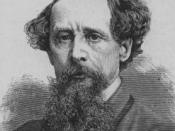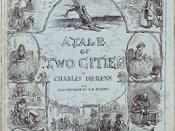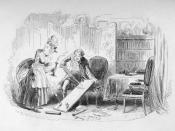The Proud Tale of England
During his time, Charles Dickens was concerned that social problems in England, particularly those relating to the condition of the poor, might provoke a mass reaction on the scale of the French Revolution. A Tale of Two Cities opens in 1775, with a comparison of England and pre-revolutionary France. While drawing parallels between the two countries, Dickens also alludes to his own time: "the period was so far like the present period, that some of its noisiest authorities insisted on its being received, for good or for evil, in the superlative degree of comparison only" (1; bk. 1, ch. 1). The rest of the chapter shows that Dickens regarded the condition to be an 'evil' one, since he depicts both countries as rife with poverty, injustice, and violence due to the irresponsibility of the ruling elite (1-3; bk. 1, ch. 1). As the novel develops, however, England becomes a safe haven for those escaping the violence perpetrated by the French Revolution.
Despite Dickens's suggestions at the beginning, the novel reflects the popular confidence in the stability of England, the English society, and the English politics of the eighteen-fifties.
A Tale of Two Cities proved a disappointment to critics who had received Dickens's earlier works favorably. Dickens's biographer, John Forster argued that "there was probably never a book by a great humorist, and an artist so prolific in the conception of character, with so little humor and so few memorable figures" (qtd. in P. Collins 422). However, Forster praised the novel when it was first published, referring in particular to the "subtlety with which a private history is associated with a most vivid expression of the spirit of the days of the great French Revolution" (qtd. in P. Collins 424). This comment suggests that Dickens...



Cool
Good start! a few mistakes but nothing too bad and a good describtion of the tale of two cities Well done
1 out of 1 people found this comment useful.